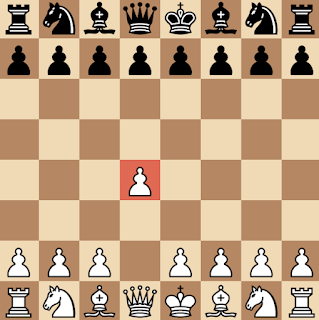Best Chess Openings for Beginners
Chess openings are the first things that beginners in chess typically want to learn, although some would suggest that the more important part of chess that people with zero experience in the game are tactics and end game technique. I tend to agree with the latter position however, I understand beginners' apprehension and desire to learn chess openings. After all, it would be useless to learn end game technique if you can't even bring your game to that point.
So, there are a few chess openings that would be best-suited for beginners to learn. Particularly, those without any complicated lines or variations. Anything flexible with simple ideas and lines are pretty easy to learn. Once you have a good grasp of tactics and positional principles, then it would be a piece of cake to move from openings to the middle game, and then to the ever-technical end game.
For the purposes of avoiding any complicated systems, I will dissuade the opening moves e4 from White's side as these have too many responses that lead to theoretical positions. For Black, I think it's a lot easier to be flexible since the goal is merely to neutralize White's advantage to come out with a playable position in the middle game. I would suggest these five chess openings that would be relatively easy to learn and play from a chess beginner's perspective.
The London System
I think there are several people out there who would suggest that beginners learn the London opening because it's quite simple in its execution. Generally, the d4 openings are more flexible and have become quite standard in White's opening repertoire during the past 30 years. Because the moves are quite straightforward, beginners don't need to memorize different variations or calculate complicated sidelines. All you need is to remember the first two important moves, d4 and Bf4.
Even though there is a chance that Black might deviate from the main line of the London system, the beauty of the opening is in its solidity. It's a stable position which can transition to various playable positions. The ideas moving forward aren't too complicated either, so if you have enough middle game practice or tactical vision in your arsenal, then there's nothing to worry about.
The Queen's Pawn
As I said a while ago, the Queen's pawn openings are generally more stable than King's pawn openings. First, the pawn is pushed forward with innate protection from the queen. Second, it's flexible because it can transition to familiar positions that arise from King's pawn openings.
Moreover, the responses from Black to this first move almost always lead to similar positions, if Black wants to maintain stability that is. There are certain defenses that are sharper than others, but in general, expect Black to make one of two moves after d4: d5 and Nf6. That gives the Queen's pawn openings one more distinct edge: it's relatively easier to study. With enough game sense and intuition, you'll be able to get by most games without learning deep lines.
The Reti Opening
One of my favorite openings as of late, the Reti opening does not try to establish central control right off the bat. You start off with Nf3 and take it from there. Of course, the only downside to this is that you give up the right to the center to Black. Black can now establish a pawn before you can. Usually, that would be d5, since it prevents you from playing e4 but then again, you usually wouldn't want to play e4 anyway in this opening.
I usually just fianchetto my light-square bishop to g2 and then castle with a very comfortable opening position. But you can also transition from the Reti to one of the other Queen's pawn openings with d4 right after Nf3. Depending on your disposition and playing style, you can either go aggressive or passive with this opening.
The English Opening
The English Opening (c4) is another way of indirectly trying to take control of the center. Not as direct as either e4 or d4, still it keeps White's options open. It also opens up the diagonal for the queen unlike the other previous openings. Generally, White's queen would perch itself on the c2 square in several lines, depending on the situation.
The only downside is that the diagonals for your bishops are still blocked by pawns. This can easily be solved within the next four moves however, with e4 and d3 to open up the way for the dark-square bishop. Meanwhile, the light-square bishop usually finds itself on the long diagonal by being fianchettoed to g2.
Again, the focus of these openings is flexibility and simplicity. You don't need to worry about timing, tension, and all those advanced concepts. What you simply need to remember are the general concepts and tactics which would help you improve by leaps and bounds.
Offbeat Black Responses
Black's main responses are usually to contest for the center whether directly or indirectly. However, I have found that these other offbeat responses to White's first move are just as viable as the conventional answers. With this, you can take your time developing your pieces and your strategy.
I do admit however, that this is a more passive approach to the game, and there are certain cases when beginners would find themselves lost somewhere in the middle game. Nevertheless, the goal for beginners is simply to reach a playable position in which they feel comfortable playing the game from the middle game onward. That is to say, for chess beginners who have little to no experience with in-depth chess study or with little resources to do so, this is the most practical method to climb and improve.








Comments
Post a Comment